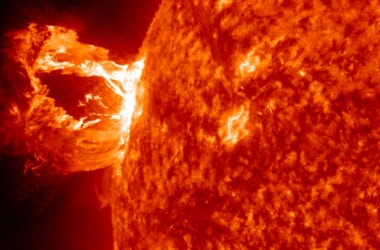
South Asia, home to one-fifth of the world’s population, could see humid heat rise beyond survivable levels by century’s end if nothing is done to halt global warming, researchers said on August 2, 2017.
The study in the journal Science Advances warned of “summer heat waves with levels of heat and humidity that exceed what humans can survive without protection”.
The research is based on two climate models. One is a “business-as-usual” scenario in which little is done to contain climate change.
The second is aimed at limiting temperature rise to well below 2°C, as pledged by more than 190 nations under the 2015 Paris climate accord.
The study is the first of its kind to look not just at temperatures, but at the forecast of “wet-bulb temperature”, which combines temperature, humidity and the human body’s ability to cool down in response.
The survivability threshold is considered to be 35°C, or 95°F.
Under a business-as-usual scenario, “wet-bulb temperatures are projected to approach the survivability threshold over most of South Asia, and exceed it at a few locations, by the end of the century,” said the report.
About 30% of the population in the region would be exposed to these harmful temperatures, up from 0% at present, said the report.
The densely populated farming regions of South Asia could fare the worst, because workers are exposed to heat with little opportunity for escape into air-conditioned environments.
Deadly heat waves could begin within as little as a few decades to strike regions of India, Pakistan, and Bangladesh, including the fertile Indus and Ganges river basins that produce much of the region’s food supply, as per the report.
In 2015, the fifth deadliest heat wave in modern history swept over large parts of India and Pakistan, killing some 3,500 people.
But researchers said their models gave cause for hope, too.
Under the scenario in which steps are taken to limit warming over the coming decades, the population exposed to harmful wet-bulb temperatures would increase from 0% to just 2%.
Temperatures would still reach dangerous levels (over 31°C), but would not be quite so close to the fatal threshold.
South Asia: Know More- South Asia or Southern Asia is a term used to represent the southern region of the Asian continent, which comprises the sub-Himalayan SAARC countries and, for some authorities, adjoining countries to the west and east.
- Population: 1.749 billion (2013)
- GDP (Nominal): $2.9 trillion